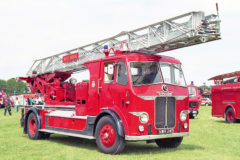1952 Bedford O-Type lorry
Posted by Chris Graham on 5th January 2021
From livestock transporter to exhibit in a unique transport museum, this 1952 Bedford O-Type has spent nearly 70 years in a small area of rural Essex, as Nick Larkin reports.
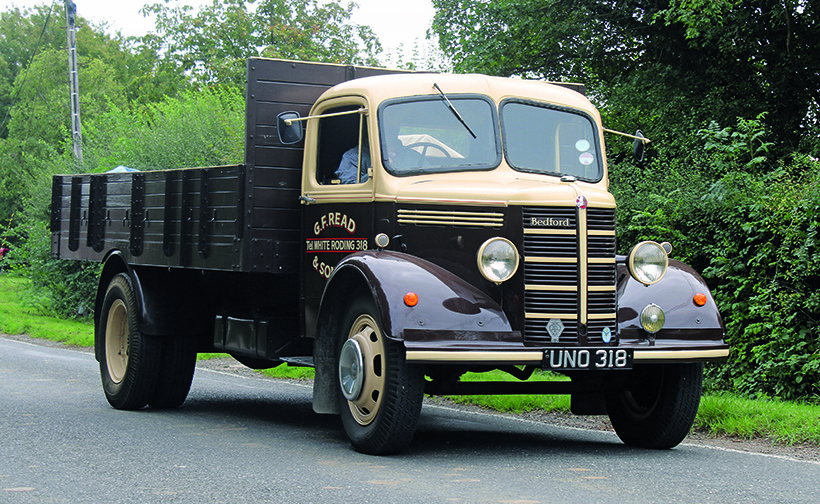
This 1952 Bedford O-type looks totally at home in rural Essex, as you might expect given that it’s been in the area for 70 years. The lorry benefits from synchromesh gearbox and servo-assisted brakes for road use.
It’s no wonder that a certain 1952 Bedford OLBC looks so at home meandering the lanes in an idyllic area of rural Essex. You see, it’s just about as ‘local’ as it’s possible to imagine, having always been based within a five-mile radius of its first home. It’s been a cattle truck, a sugar beet lorry and, latterly, a lovingly-restored museum exhibit.
But, before we go any further, you must understand that Essex is a contrasting and unfairly maligned county, and the part we’re visiting is a world away from the more southerly portion that’s forever associated with fake tans, fake pillars and hair extensions. In this part, ‘having your nails done’ would typically entail commissioning the local blacksmith!
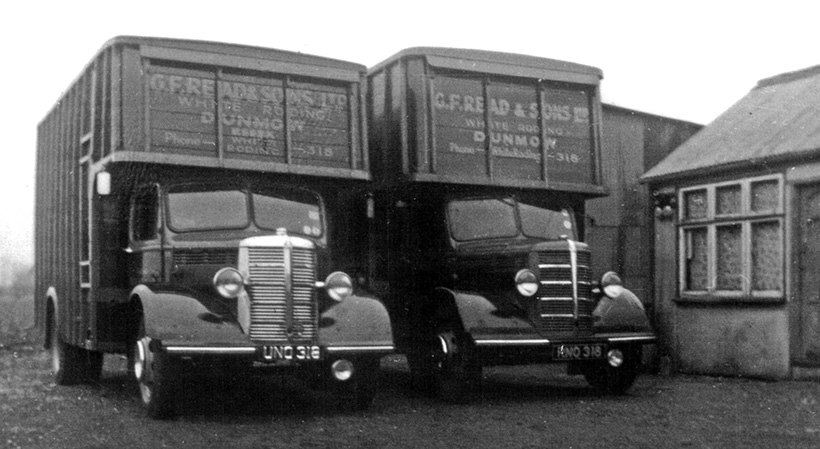
UNO 318 was the second Bedford O-Type bought by GF Read. Here it is when new, with an older vehicle. (Pic: )
Long career begins
It was in the village of White Roding where, in June 1952, the lorry began its long career with Read livestock hauliers. The family-owned firm was then based at premises in the yard at the Whalebone pub, and you could imagine regulars coming over with their tankards of frothy ale to admire the new arrival, and maybe toast it.
Started by Geoff Read, the firm became GF Read & Sons Ltd, after sons George and Jim joined. Although it normally had only three or four lorries, the firm became well-known in the area; its vehicles being regularly seen at – and en route to – markets at Bishops Stortford and Epping.

George Read Junior with OLBC RNO 318 and unknown dog at the company’s White Roding base (the back of UNO 318 can just be seen in the garage).
Among their admirers was Andy Ballisat, who kindly provided the period pictures for this feature. “I grew up at Sawbridgeworth and remember seeing the vehicles, which always seemed to be very well looked after.
”I don’t remember the Bedford in use but, later, the company had an S-Type and various Dodges,” Andy added. He later get to know both George and brother Jim well, thanks to a mutual interest in classic lorries. He was loaned the photographs included here, which include a priceless shot of UNO 318 with an earlier O-Type Bedford – note the similarity in its registration, RNO 318 – also to match the firm’s White Roding phone number.
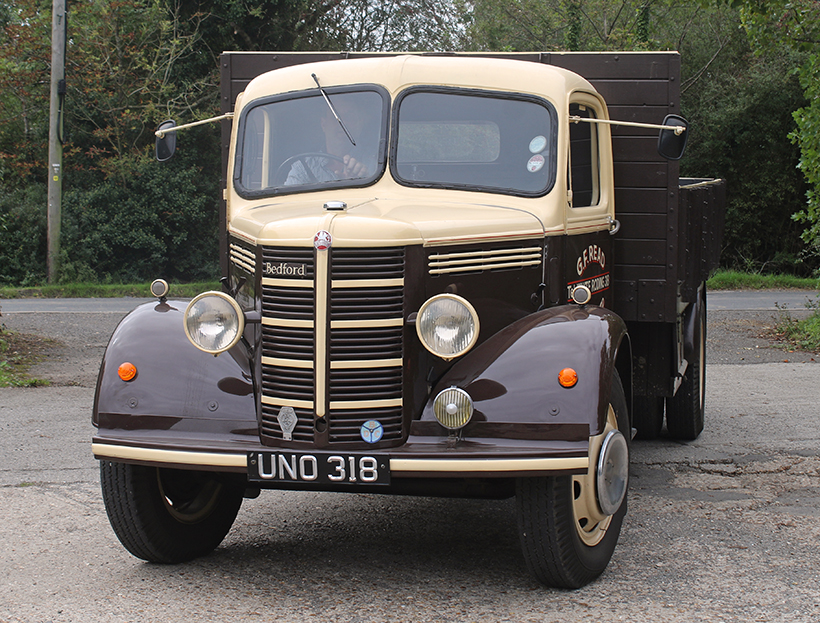
Brown and cream Read livery was a familiar sight locally for 40-plus years.
Good service!
A Bedford SLC gave such good service that a second example was ordered, but the supplying dealer couldn’t help as the Bedford TK had just been introduced. Hence Read ended up with one of the first examples of this model, 318 UNO, dating from the year of the model’s launch, in 1960.
A less successful purchase had been a Ford Thames ET, which the Reads felt wasn’t up to the job. The firm later moved on to Dodge K500s and ERF vehicles, before various other Dodges joined the fleet, together with an ERF, registration NWC 55M.
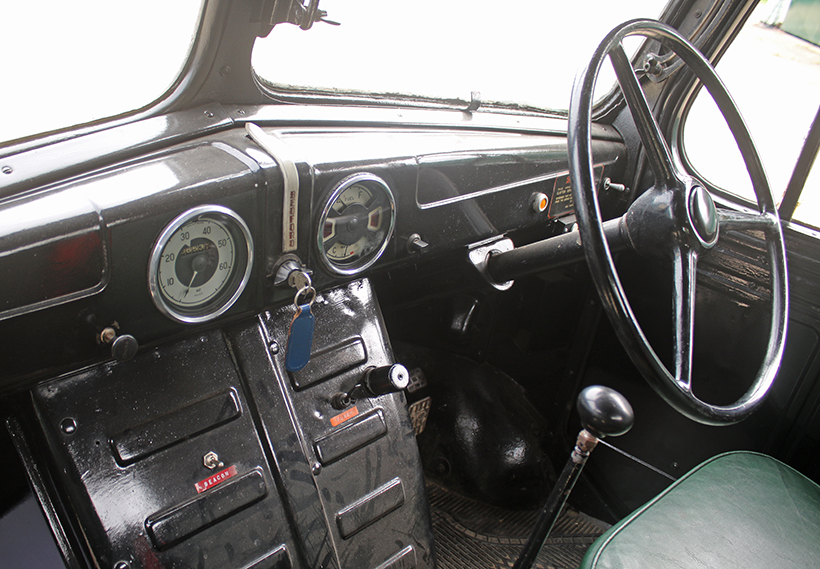
The interior is in largely original condition.
Meanwhile, towards the end of its service life, the OLBC began a new career in sugar beet haulage. It’s believed that the lorry was removed from service in the early 1970s and, rather than going for scrap, that it was parked in a shed on the White Roding site then being used by the firm after it vacated the pub’s yard. Jim Read married ‘lady in the office’ Doreen!
Read eventually ceased trading in the mid-1980s, but a new use was found for the White Roding site – storing buses and lorries for preserved vehicles. This was how Andy Ballisat got to know George and Jim. “I owned a Bedford OLBC, registration LUV 712 for 30 years, and Reads agreed that I could keep it at its yard, Andy explained.

Bedford petrol engine also powered the OB coach.
Surplus dropside body
Andy bought a Luton body from LW Vass of Ampthill to fit to his Bedford which, for the records, is now owned by Riggall’s Removals of Mawthorpe, near Alford, Lincs.This meant a dropside body was surplus to requirements, but it certainly wasn’t going to be wasted!
George and Jim Read decided that it was time to restore UNO 318, which was still slumbering in the corner of the shed, as it had been for many years. The vehicle was stripped to the chassis, which was shot-blasted and painted. The dropside body was stripped down and painted, and everything mechanical and electrical was attended to. All the work was carried out in-house, and the lorry was first shown at one of Richard Haughey’s legendary Bedford gatherings, in the early 2000s.
Meanwhile Jim Read had gone to work as driver with renowned coach operator Lodge’s, of High Easter. “We were delighted to have Jim join us, and well remembered GF Read lorries. We painted the Dodge and ERF for the company years ago,” explained director, Andrew Lodge.

Read had a policy of ordering vehicles with ‘318’ in the registration number, to match the firm’s phone number.
“When Jim became ill, he asked if we could take on the Bedford and keep it for as long as possible while maintaining the ‘GF Read’ name on it. If ever the lorry had to be sold, proceeds would go to the Royal British Legion,” Andrew explained.
The perfect home
Now the lorry definitely fell on its proverbial wheels here, as Lodge’s – celebrating its 100th anniversary this year – not only has a fine collection of preserved, mainly Bedford coaches and other vehicles, but a museum (aka ‘The Toybox’) to keep them in! This was officially launched in 2018, and can accommodate group visits. “The Read’s lorry is an important part of local history, so it fits into the collection very well,” Andrew added.
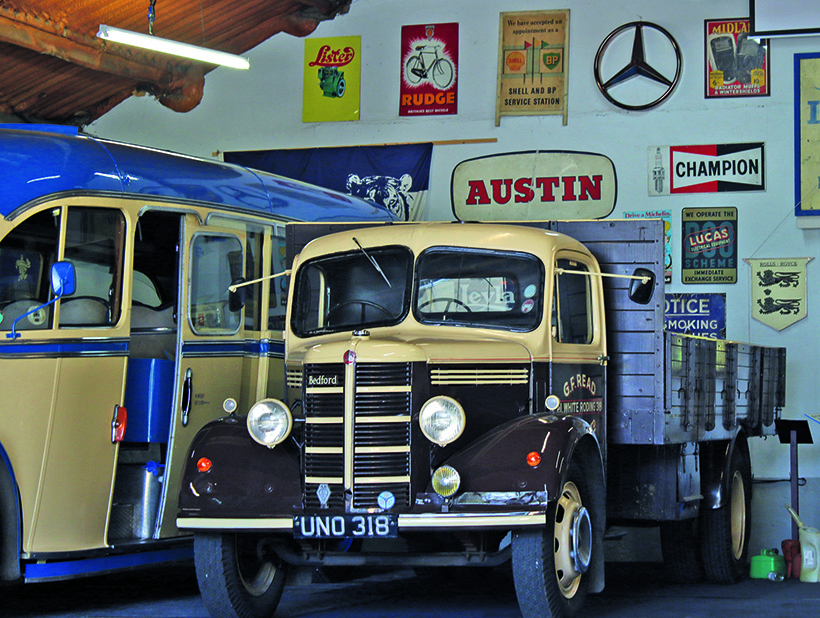
The Bedford now resides in the ‘Toybox’ museum!
So, the Bedford is in happy retirement in its ‘home’ area, sitting among coaches of the same marque. The Bedford has a couple of interesting features. Firstly, it was one of the first O-series to have synchromesh gears and, secondly, it was fitted with a Clayton Dewandre brake servo; the subject of a large warning notice on the dashboard!
The Whalebone pub, where GF Read was originally based, is now a private residence, and the company’s later premises are being built on. But, at least the memory of this operator lives on with a certain Bedford. Hopefully this lorry will long be enjoying a run through its home vista, looking good and retaining the figures 318 – in both its registration and the GF Read & Sons’ White Roding phone number.
For a money-saving subscription to Classic & Vintage Commercials magazine, simply click here




